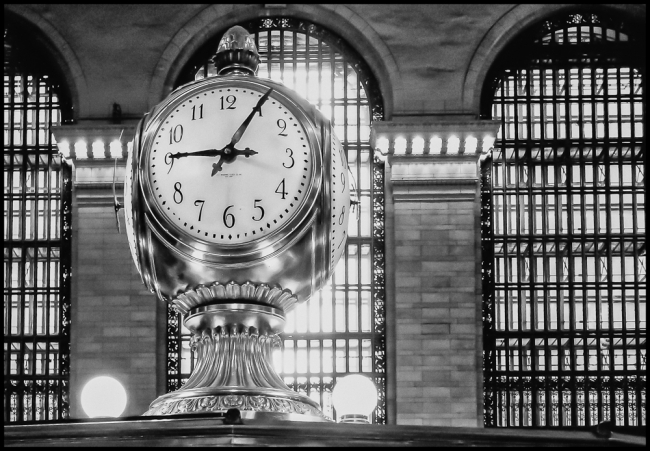This shot of the iconic clock at Grand Central Terminal was one of the first ever from my Panasonic LX-3.
According to Wikipedia:
The 18-sided main information booth — originally the “information bureau” — is in the center of the concourse. Its attendants provide train schedules and other information to the public;[40] in 2015, they fielded more than 1,000 questions an hour, according to an MTA spokesman. A door within the marble and brass pagoda conceals a spiral staircase down to a similar booth on the station’s Dining Concourse.
The booth is topped by a four-faced brass clock that may be Grand Central’s most recognizable icon. The clock was designed by Henry Edward Bedford and cast in Waterbury, Connecticut. Each 24-inch (61 cm) face is made from opalescent glass, now often called opal glass or milk glass. (Urban legend says the faces are actually opal, valued by Sotheby’s or Christie’s between $10 million and $20 million.) The clock was first stopped for repairs in 1954, after it was found to be losing a minute or two per day.
Along with the rest of the New York Central Railroad system’s clocks, it was formerly set to a clock in the train dispatcher’s office at Grand Central.[45] Through the 1980s, they were set to a master clock at a workshop in Grand Central. Since 2004, they have been set to the United States Naval Observatory’s atomic clock, accurate to a billionth of a second.
For more information (e.g. including its use in movies) on the clock see New York’s Most Famous Clock.

